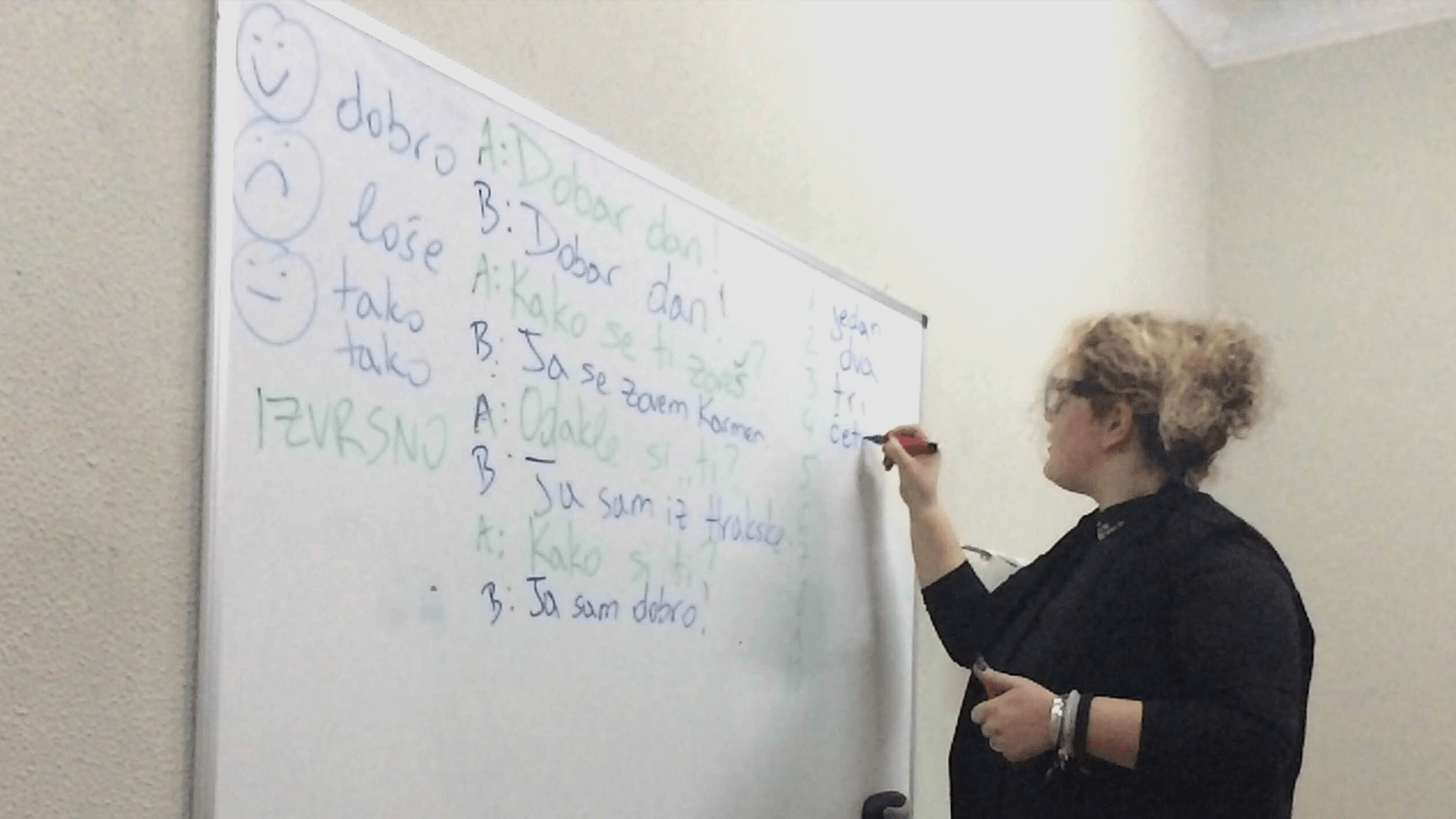It’s sometimes difficult to put ourselves in the place of our ESL students and understand what it’s like to learn a foreign language just using the L2. When teaching English in Spain, need you to be able to see it from the perspective of your student, which is no easy feat. Our trainer, Rory, looks back at his experience during TtMadrid’s TEFL course, when he had to learn Croatian to do just that:
Learning Croatian: UNL experience
I remember fondly waiting for my Croatian class back in week one of the August course many moons ago, that feeling of anticipation and excitement as I was going to delve into a new language. Croatia was a country that I had never been to, but which was on my list of destinations to visit before turning 40. Dober dan! are two words I shall never forget and as I stepped into the classroom they hit me like a hurtling truck.
The reality of this being a language that I had absolutely no idea of finally struck me and I could feel the beads of sweat forming on my forehead. The 60-minute immersion into a new language was underway and there was no option to speak English (or Spanish!), as our wonderful teacher was in full character and any mutterings that weren’t in Croatian were not acknowledged.
Why teach a language like this (or at least attempt to), you may ask? After the initial shock had worn off, I was able to tune into the gestures of the teacher and the simple hand wave highlighted that “dober dan” was in fact “hello”. Ok, one phrase understood! I was then able to decipher through logic, that a version of “how are you” should be next up. Focus on the pronunciation was the next step, as I was able to let the structure of a natural introductory conversation wash over me. My need for the teacher to translate back to English was dissolving by the second. Further gestures and thumbs up and thumbs down, coupled with a grin and a frown, illustrated positive and negative responses to the question.
The international language of body language was now consciously more apparent to me than ever. As a ball (poetically an inflatable globe) was thrown from student to student, and we pointed to and stated where we were from, we all begin to feel even more relaxed. It didn’t matter at all what our L1 language was, we were all equally novice to Croatian and our credentials outside of class didn’t matter
As a child learning French in school, our teachers often taught the language through direct translation from English and there was little emphasis on us expressing ourselves in the said language. Rather, specific phrases were drilled repeatedly that would serve for us to answer exam questions and there was little or no opportunity to have running dialogue with peers or the teacher in French.
A lot of the time this will also be the case for your Spanish students, particularly for those who are over 30 – English learning will largely have been repetitive, grammar heavy, and focused on translation rather than verbal expression. For this reason, it’s essential that we practice what we preach and do the UNL in order to get a feel for the teaching style we so proudly champion here at Tt.
Your teaching class should be a genuine opportunity for your students to feel an authentic immersion into the foreign language with a teacher who communicates with them confidently and effectively in the language they wish to learn.
After the Croatian class, I felt like I had a real “language workout” if you will. My brain was slightly frazzled, but I walked away with “Dober dan” and the confidence that immersion classes really are effective. Imagine what you can do after a full term!
Want to know more about the contents of our TEFL course? Email [email protected] for more information.

Comments are closed.